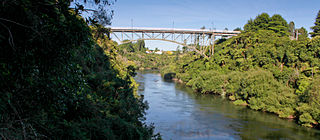
Cambridge is a town in the Waipa District of the Waikato region of the North Island of New Zealand. Situated 24 kilometres (15 mi) southeast of Hamilton, on the banks of the Waikato River, Cambridge is known as "The Town of Trees & Champions". The town has a population of 21,600, making it the largest town in the Waipa District, and the third largest urban area in the Waikato.

Te Kuiti is a town in the north of the King Country region of the North Island of New Zealand. It lies at the junction of State Highways 3 and 30 and on the North Island Main Trunk railway, 80 kilometres (50 mi) south of Hamilton. The town promotes itself as the sheep shearing capital of the world and is host to the annual New Zealand National Shearing Championships.

Rotorua is a city in the Bay of Plenty region of New Zealand's North Island. The city lies on the southern shores of Lake Rotorua, from which it takes its name. It is the seat of the Rotorua Lakes District, a territorial authority encompassing Rotorua and several other nearby towns. Rotorua has an estimated resident population of 57,900, making it the country's 12th largest urban area, and the Bay of Plenty's second largest urban area behind Tauranga.
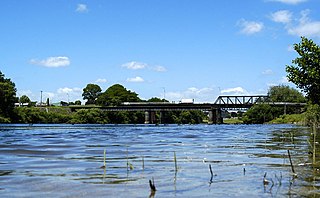
Ngāruawāhia is a town in the Waikato region of the North Island of New Zealand. It is located 20 kilometres (12 mi) north-west of Hamilton at the confluence of the Waikato and Waipā Rivers, adjacent to the Hakarimata Range. Ngāruawāhia is in the Hamilton Urban Area, the fourth largest urban area in New Zealand. The location was once considered as a potential capital of New Zealand.

Whakatāne is the seat of the Bay of Plenty region in the North Island of New Zealand, 90 kilometres (56 mi) east of Tauranga and 89 kilometres (55 mi) north-east of Rotorua, at the mouth of the Whakatāne River. Whakatāne District is the encompassing territorial authority, which covers an area to the south and west of the town, excluding the enclave of Kawerau District.
Tokoroa is the fifth-largest town in the Waikato region of the North Island of New Zealand and largest settlement in the South Waikato District. Located 30 km southwest of Rotorua, close to the foot of the Mamaku Ranges, it is midway between Taupo and Hamilton on State Highway 1.

Rangitoto College is a state coeducational secondary school, located on the North Shore of Auckland, New Zealand. Serving years 9 to 13, Rangitoto has a school roll of 3234 as of July 2022, making it the largest "brick-and-mortar" school in New Zealand. Patrick Gale is the current principal.

James Hargest College is a large school of about 1,950–2,000 students, in Invercargill, New Zealand. The school caters for students from year 7–13.

Hamilton Boys' High School is a boys' secondary school in Hamilton, New Zealand and is the largest secondary school in the Waikato region. The school was established as Hamilton High School in 1911 but was later split into separate boys' and girls' schools, with the current school opened in February 1955. Its sister school is Hamilton Girls' High School. The school crest features a lion, sash and star, and bears the motto "Sapiens Fortunam Fingit Sibi" which translates to "a wise man carves his own fortune". The school colours are black and red.
Otahuhu College is a secondary school in Auckland, New Zealand for students years 9 to 13.
Mount Albert Grammar School, commonly known as MAGS, is a co-educational state secondary school in Mount Albert in Auckland, New Zealand. It teaches students in year levels 9 to 13. As of August 2021, Mount Albert Grammar School is the second largest school in New Zealand, behind Rangitoto College.
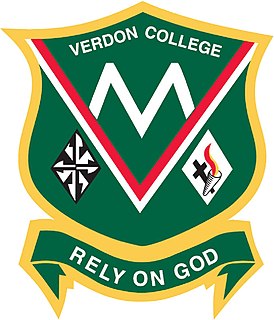
Verdon College is a co-educational Roman Catholic high school in Invercargill, New Zealand, teaching students from year 7 to 15. The college is named after Bishop Michael Verdon (1838–1918) who was the second Catholic Bishop of Dunedin (1896–1918). It has the highest rate of achievement in NCEA results for secondary schools in Invercargill city.
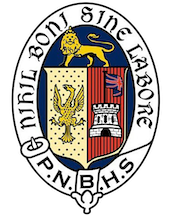
Palmerston North Boys' High School is a traditional boys school located in Palmerston North, New Zealand.
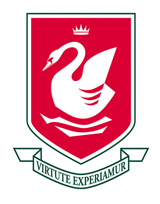
Westlake Girls High School is a state girls secondary school, located to the west of Lake Pupuke in Takapuna, Auckland, New Zealand. The school was established in 1958 as a coeducational school, changing to girls only in 1962 when Westlake Boys High School opened. Westlake Girls has a roll of approximately 2096 students from Years 9 to 13, making one of the largest single-sex schools in New Zealand.
Bridge Pā is a rural Māori settlement and surrounding area in Hawke's Bay, New Zealand, located approximately 10 kilometres inland from Hastings. The pā itself comprises approximately 70 households, a school, a meetinghouse of the LDS Church, two marae, a cemetery, a disused quarry, and the 140-year-old historical Homestead of the Puriri Family. The population was 184 in 1996, increasing to 213 in 2001.

Napier Girls' High School is a state secondary school on Clyde Road, Napier, New Zealand. It is one of the oldest schools in New Zealand for girls, and has a current school roll of about 1000.
Paroa is a rural locality situated near Whakatāne in the Bay of Plenty region of New Zealand. The small, predominantly Māori community is located along State Highway 30, and contains a school and a sports rugby club.
Otakiri or Ōtākiri is a rural community just outside Edgecumbe, in the Whakatāne District and Bay of Plenty Region of New Zealand's North Island.
Waimana is a rural valley in the Whakatāne District and Bay of Plenty Region of New Zealand's North Island. It is located in the northern Te Urewera. Waimana River, originally known as Tauranga River, runs through the valley, joining the Ohinemataroa River one kilometre south-west of the Tāneatua.

Coastlands is a beach settlement in the Whakatāne District and Bay of Plenty Region of New Zealand's North Island. It is located north of Whakatāne, directly across the Whakatāne River.

















